Keywords
3D food, printing, sensory, evaluation, printability, consumer, acceptance.
This article is included in the Agriculture, Food and Nutrition gateway.
Three-dimensional (3D) food printing is an emerging technology with potential applications in personalized nutrition and sustainable food production. However, its success hinges critically on consumer acceptance, which is predominantly determined by the sensory properties of the printed products. A comprehensive synthesis of the literature on the sensory evaluation of 3D-printed foods was needed.
This systematic review aimed to map and critically analyse the current state of knowledge on the sensory properties of 3D-printed foods, the methodologies used for their evaluation, and the relationship between printing parameters, material properties, and sensory perception.
A systematic literature search was conducted, resulting in the inclusion and analysis of 65 relevant scientific studies.
The field is experiencing exponential growth, with research focused on chocolate, meat products, and purees, often printed as simple geometric shapes for controlled study. Sensory evaluation relies heavily on affective (hedonic) and descriptive methods (e.g., QDA). A strong link exists between the rheological and textural properties of the food inks ("printability") and the sensory attributes of the final product ("liking or acceptability"). Key challenges include the limited use of existing sensory methods and the need to explore sustainable ingredients.
The future of the field lies in integrating material science with sensory science to create customized, nutritious, and appealing foods. The application of different sensory methods according to the study objective and further research into the dynamics of oral processing are essential for progress.
3D food, printing, sensory, evaluation, printability, consumer, acceptance.
3D food printing (3DFP) is at the forefront of technological innovation in the food sector, offering unprecedented capabilities to personalize the shape, texture, nutritional content, and even the sensory experience of food products.1 This additive manufacturing process builds edible materials layer by layer, based on digital designs, enabling the creation of complex structures that are difficult to achieve using traditional methods. The applications of 3DFP are broad, ranging from personalized nutrition for specific dietary needs and elderly care to sustainable production using alternative protein sources and food waste valorization.2,3
However, the ultimate success of any food technology, no matter how innovative, depends on one crucial factor: Overall consumer liking. A nutritionally or technologically suitable product, but rejected by consumers, is destined to fail in the market. The main determinant of consumer acceptance is the sensory properties of the food: its appearance, aroma, texture, taste and overall liking.4 While significant research and development efforts have been devoted to optimizing printers, formulating edible inks (e.g., from fruits, vegetables, cereals and proteins) and ensuring structural stability, the sensory experience of the final printed product is the crucial bridge between the technological potential and its selection (success) in the market.5
The process of 3D printing itself induces significant changes to food matrices. Parameters such as nozzle diameter, printing speed, layer height, and post-processing treatments (e.g., cooking, frying, drying) directly influence the product’s microstructure, which in dictates its macrostructural properties, particularly texture and appearance.6,7 For instance, the extrusion process can shear and align biopolymer chains, affecting gel strength and mouthfeel, while layer-by-layer deposition can create unique porous structures that influence crunchiness or hardness.8 These alterations mean that a food ink that is palatable in its pre-printed form may yield a printed product with entirely different, and sometimes inferior, sensory characteristics.
Consequently, sensory evaluation becomes an indispensable tool in the 3DFP development cycle. It provides the objective data needed to assess whether the printed food meets consumer expectations and to guide the optimization of printing parameters and ink formulations. Methodologies range from descriptive analysis with trained panels to quantify specific sensory attributes, to affective consumer testing measuring liking, preference, and purchase intent.9,10
As the field matures, the body of literature investigating the sensory properties of 3D-printed foods has grown rapidly. However, this knowledge remains fragmented. Studies vary widely in their focus (materials, printing technologies, sensory methods), and their findings are often context-specific. A comprehensive synthesis is therefore needed to consolidate existing evidence, identify consistent trends, highlight methodological challenges, and pinpoint gaps that require future research.
To address this need, this manuscript presents a systematic literature review on the sensory evaluation of 3D printed foods. The main objectives of this review are: (1) to outline the current research landscape on food sensory properties; (2) to critically analyze the methodologies employed for sensory testing in this context; and (3) to summarize 3D printing equipment and sensory techniques with trained judges and consumers. This review aims to serve as a fundamental guide for researchers and industry professionals working to align 3D food printing technology with consumer sensory perceptions.
To ensure the clarity, transparency, and replicability of the review process, the study was conducted following the PRISMA (Preferred Reporting Items for Systematic Reviews and Meta-Analyses) guidelines. This standard, widely recognized in biomedicine and other disciplines, establishes guidelines for authors to comprehensively report the purpose of the review, methodological procedures, and findings obtained through a checklist and a study selection flowchart.11
The exploratory literature search was conducted in the main international databases (Scopus, ScienceDirect, Web of Science, and Dimensions) using a combined strategy of Boolean operators, designed according to best practices for systematic reviews. The search terms were grouped using the OR operator to include synonyms and variants, AND to combine key concepts, ensuring a balance between breadth (sensitivity) and precision (specificity) of the results. The search strategy was developed iteratively to ensure comprehensiveness and accuracy. Initially, the query applied was TS = (Sensory AND food) AND (3D AND print). Subsequently, a synonymous term was incorporated, expanding the query to TS = (Sensory AND food) AND (3D AND print) OR (3D AND printing). To refine the scope and include specific sensory methodologies, additional terms were progressively added: first descriptive sensory tests (TS = (Sensory AND food) AND (3D AND print) OR (3D AND printing) OR descriptive), followed by discriminative tests (TS = (Sensory AND food) AND (3D AND print) OR (3D AND printing) OR descriptive OR discriminative), and finally affective sensory evaluation: TS = (Sensory AND food) AND (3D AND print) OR (3D and printing) OR descriptive OR discriminative OR liking. Figure 1 shows a concise summary of the PRISMA methodology used in this article. The complete PRISMA 2020 checklist for the included studies is provided in the supplementary materials (file: “PRISMA 2020 Checklist Complete vf.pdf”), accessible through the Zenodo data repository (DOI: https://doi.org/10.5281/zenodo.17295507).
Subsequently, articles that met thematic relevance were selected, that is, those that addressed the use of 3D printing in food, including its sensory evaluation. The retrieved documents were filtered using predefined eligibility criteria and evaluated based on their methodological quality and relevance to the review objectives.
Inclusion criteria were defined to ensure the coherence and relevance of the analyzed corpus, considering: i) original studies with experimental designs that reported quantitative results; ii) research examining the application of 3D printing technologies in food.
In contrast, the following were excluded: i) research focused exclusively on technological parameters (e.g., printing speed, design software, or specific 3D printing/injection techniques); ii) applications of 3D printing in other industries; iii) studies focused on dysphagia that did not include sensory evaluation; iv) systematic reviews, meta-analyses, or other types of methodological reviews.
To conduct a comprehensive analysis of the selected publications, VOSviewer (version 1.6.19) was used to extract bibliometric information, including year of publication, country of origin, authors, and journals. From this data, visualizations were generated that facilitated the interpretation of patterns and relationships. To optimize the presentation of the results, Microsoft Office 2019 and complementary tools were used to create graphs and tables that summarized the collected information in a clear and organized manner.
The search strategies used in the Scopus, ScienceDirect, Web of Science, and Dimensions databases were defined based on the background review (Figure 1). Data collection and registration took place in May 2025, including both original articles and reviews (n = 28 180). For the final selection, original articles were prioritized, considering the title, abstract, and keyword fields, without applying time restrictions (2019-2025). During the process, a precise alignment was achieved between the study objectives and the selected articles, resulting in a total of 65 relevant publications for analysis, from a total of 5 807 records initially identified on 3D printing in food. From the selected studies, a consolidated database was created that compiles relevant information on each document, including authors, titles, year of publication, journal, abstracts, and other pertinent data. This allowed for a detailed analysis of the scientific literature. The database of the selected articles is provided in the supplementary materials, name file: “Database review sensory.xlsx”, in Zenodo (https://doi.org/10.5281/zenodo.17295507).
The analysis of publication trends reveals that research interest in the sensory evaluation of 3D-printed foods is both recent and rapidly expanding ( Figure 2). Research in this specific field (Figure 2a) consolidated around 2019 and has experienced exponential growth year after year, peaking in 2023. 2024 suggests that this upward trend not only continues but accelerates, indicating that the field is rapidly expanding and gaining significant momentum within the scientific community. This growth, demonstrated in this systematic review, seeks to synthesize the accumulated knowledge in this dynamic and evolving research landscape on the use of 3D-printed foods and their association with sensory perception. On the other hand, the different investigations reveal a scientific production led by China, with significant contributions from India, Turkey and several European countries (Figure 2b), confirming the global interest in the field. The research is predominantly published in high-impact food science and technology journals (e.g., Food Hydrocolloids, Innovative Food Science and Emerging Technologies), as well as in specialized sensory and engineering publications (Figure 2c), reflecting its multidisciplinary nature.
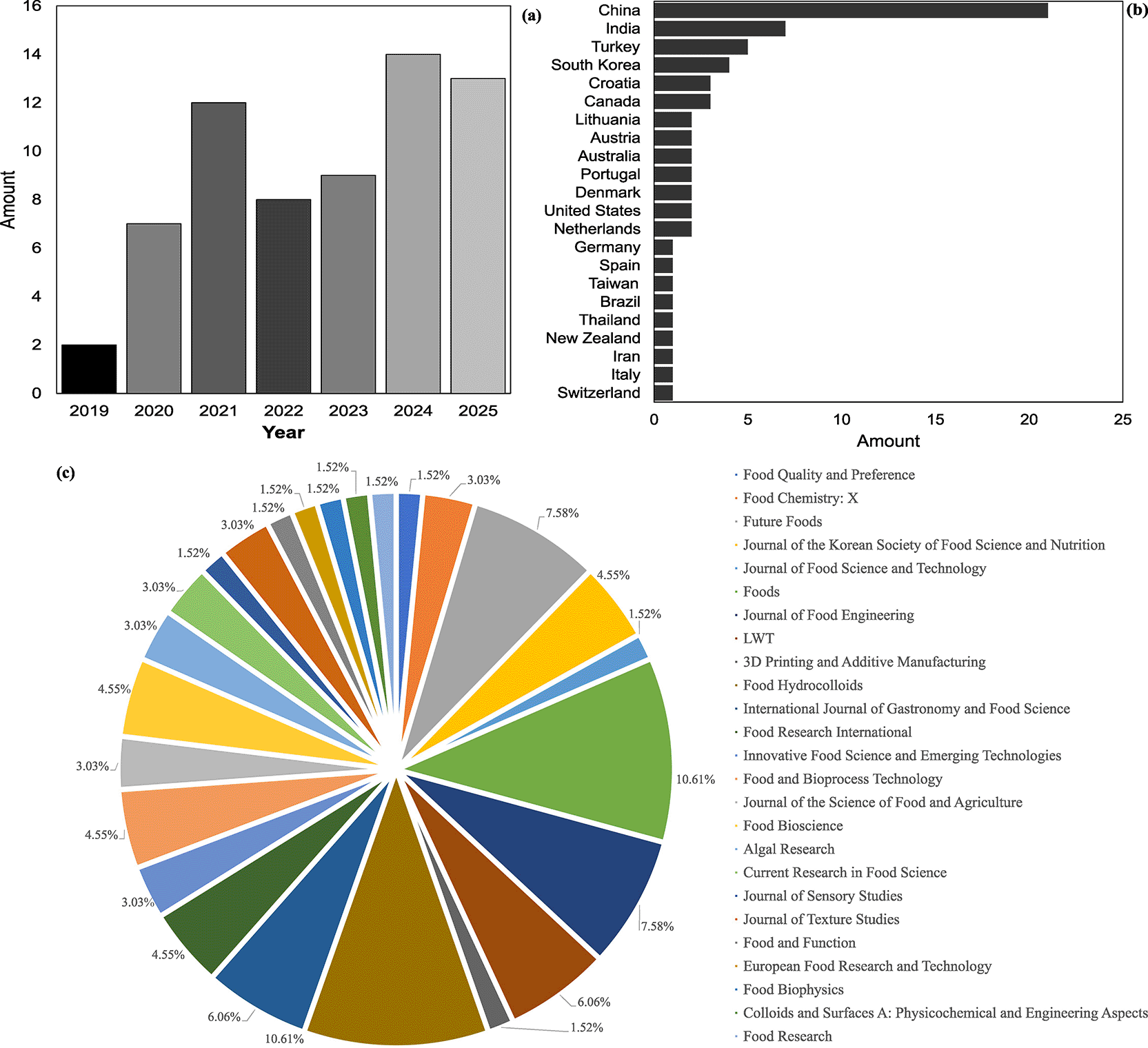
Analysis of the authorship of the included studies (Figure 3a) identifies key researchers who are driving the field forward. Bhandari, B., and Zhang, M., emerged as the most prominent contributors, suggesting the presence of leading research groups that are laying the methodological groundwork in this area. The recurrence of these and other authors, such as Liu, Z., and Deyahastin, S., indicates that, while the field is global, cutting-edge knowledge is concentrated in a network of highly specialized research teams that are producing a significant volume of the research literature. Regarding design, the literature shows a clear focus on printing simple, standardized “geometric shapes” (Figure 3b). Furthermore, analysis of printed materials and shapes reveals that sensory research has focused on foods with rheological properties suitable for extrusion, with mashed potatoes and chocolate being the most studied models. Furthermore, there is significant interest in meat systems and hydrocolloid-based gels. This suggests that the current phase of research prioritizes a fundamental understanding of how printing parameters and formulation affect sensory properties, using simplified models for better experimental control, before addressing complex, customized designs.
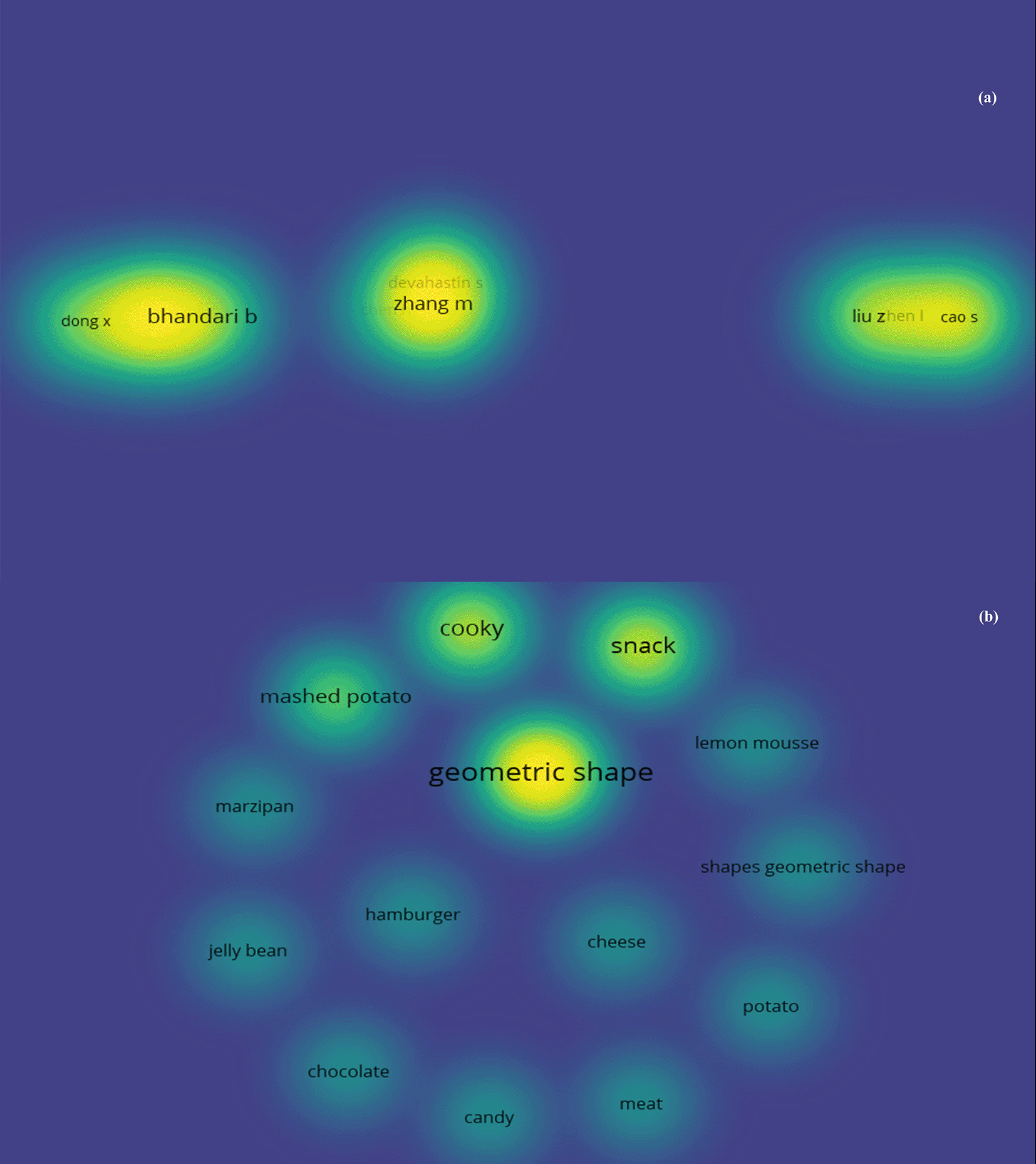
Note: the color scale represents publication density, with yellow indicating higher concentration and blue indicating lower concentration.
The analysis of terms appearing in the titles of the included studies (Figure 4a) supports previous findings and further delineates the research scope within this field. The centrality of the terms ‘3D printing’ and ‘sensory property’ validates the focus of this review. Furthermore, the high frequency of words such as ‘characterization’, ‘effect’, and ‘impact’ demonstrates that the literature corpus is heavily weighted toward experimental studies that seek to establish causal relationships between printing process parameters, food formulation, and the resulting sensory properties. This indicates a mature field that goes beyond mere conceptual demonstration and delves into scientific process optimization. Furthermore, the analysis of the abstracts ( Figure 4b) provides the methodological and thematic specifics of the field. The results highlight that research focuses on specific sensory attributes, especially ‘appearance’ and ‘color’. This exploration confirms the use of a wide range of materials, from chocolate to hydrocolloids such as gelatin and alginate, and innovative ingredients such as spirulina. Critically, the recurrence of key rheological terms such as ‘yield stress’ and ‘infill level’ demonstrates that sensory optimization is intrinsically linked to the precise control of the physical properties of food inputs (inks). This dual focus on materials science and sensory evaluation is the hallmark of current research in this field.
The printing technologies used in the included studies ( Table 1) reveal an extremely diverse and evolving technological landscape. The range of equipment extends from low-cost, open-source 3D printers tailored for academic research to specialized, high-precision industrial systems for commercial applications. The prevalence of customized in-house developments (e.g., TNO printer, CARK, Yoli Lab 1.0) underscores that the technology is in a phase of intense innovation, where tailored solutions are often required to address specific research challenges. The specialization of several printers in particular materials, especially chocolate, highlights its role as a fundamental model material. This technological heterogeneity is an indicator of a young and dynamic field, but also presents a challenge for methodological standardization. The selection of printing equipment therefore emerges as a critical variable that directly influences the reported rheological and sensory results, a variable that must be carefully considered in any comparative analysis.
| Extrusion printing | Description | Image |
|---|---|---|
| 3D FoodJet | It’s a jetting-based system, ideal for commercial applications such as decoration, shape redesign, chocolate customization, and scalable food production, although it’s still in the early stages of market adoption. Available at https://www.foodjet.com/ | 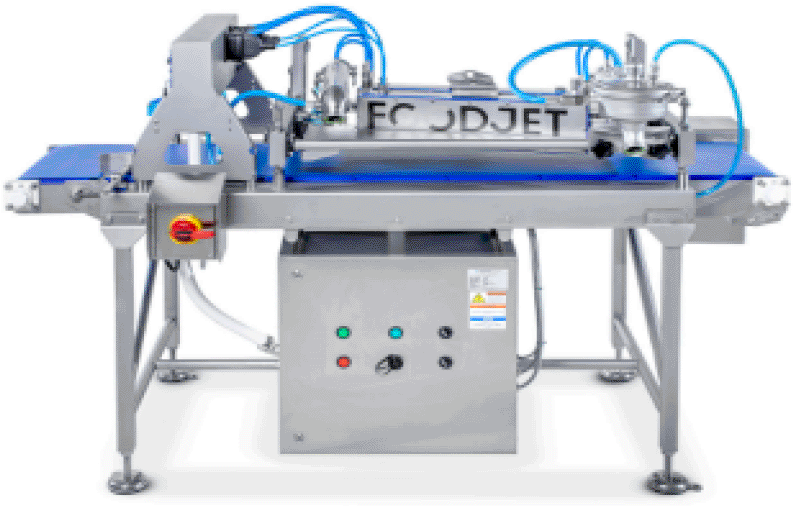
|
| 3Drag | It’s an open-source, robust, and highly adaptable Italian 3D printer used for chocolate printing. Available at https://www.open-electronics.org/the-3drag-choco-chocolate-3d-printer-cooling-system-explained/ | 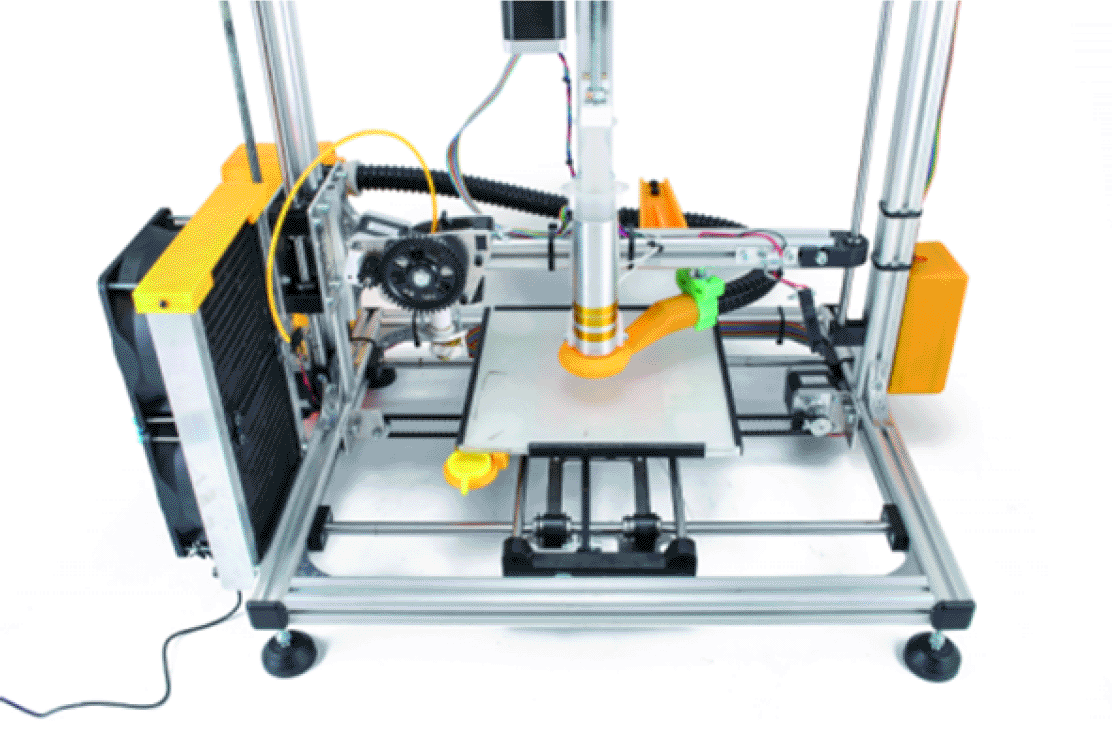
|
| Abtin - ll | A model developed by the Iranian company Abtin Teb Fanavar, partially focused on the food sector. Available at https://www.sciencedirect.com/science/article/pii/S2590157524003766 | 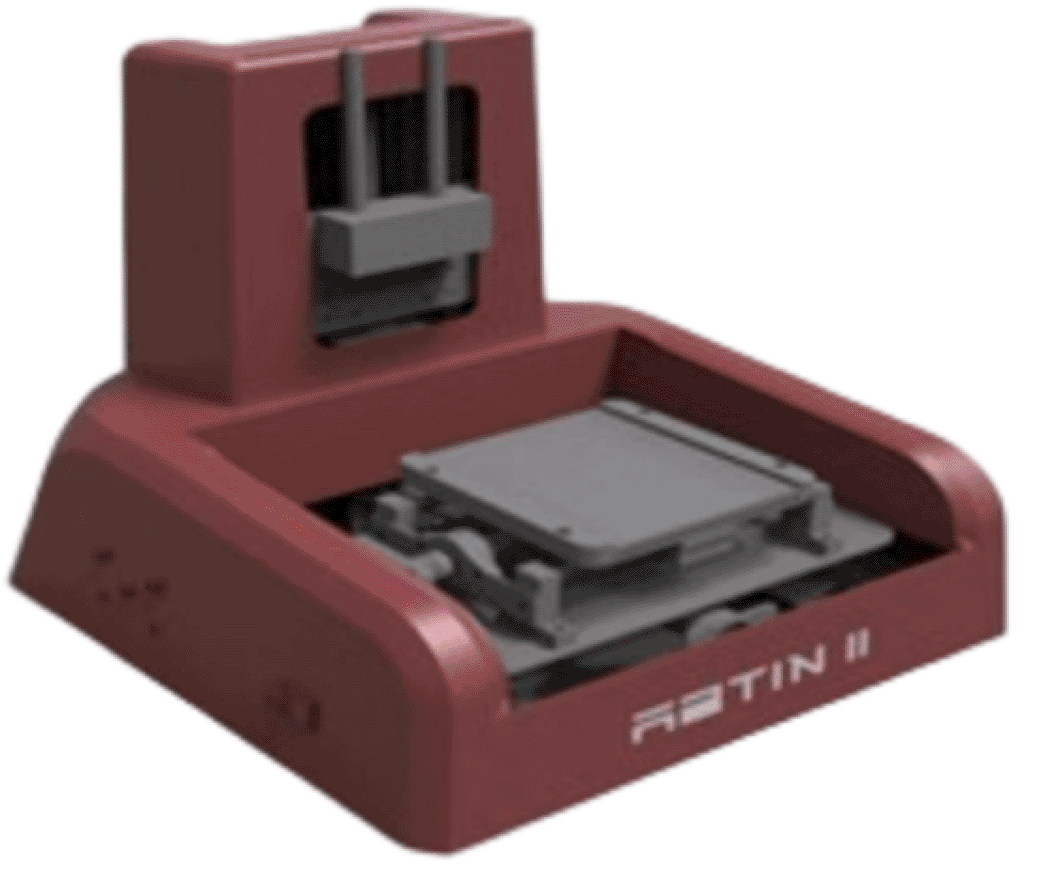
|
| AXO-A3 (Axolotl Biosystems) | This is the most powerful biomanufacturing platform they’ve launched to date, designed for professional use with plug-and-play operation and high mechanical precision. Available at https://www.axolotlbio.com/axo-a3 | 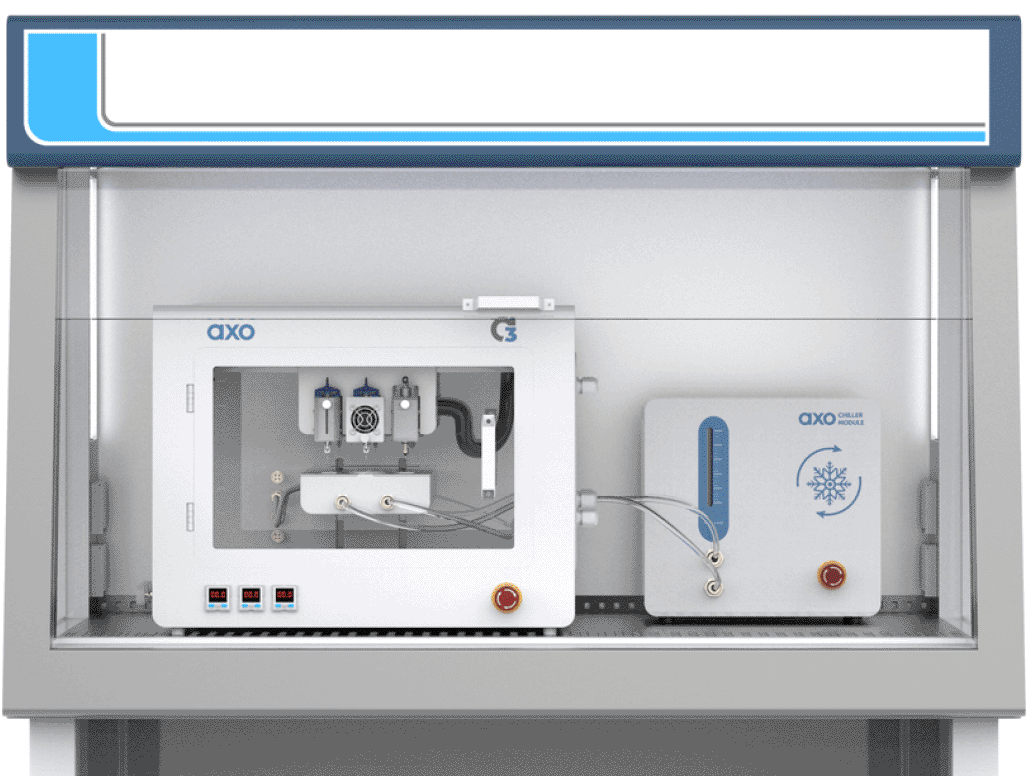
|
| Creality Ender 3 Pro | It’s an FDM (fused deposition modeling) 3D printer, notable for its affordability, reliability, and ease of use. It features a more robust build, a high-quality magnetic bed, a professional-grade power supply, and a convenient resume print function. Available at https://www.3dcadperu.com/impresora3d/creality/creality-ender-3-pro/ | 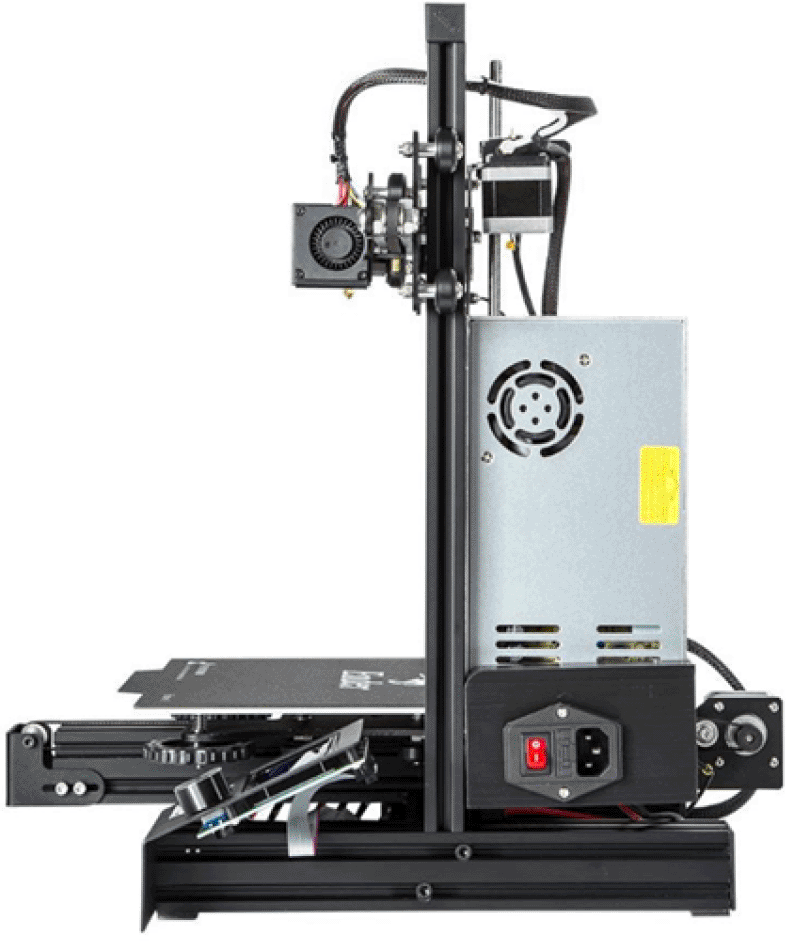
|
| Createbot | It offers a diverse range from compact educational models to larger, more precise professional devices. Available at https://createbot.net/ | 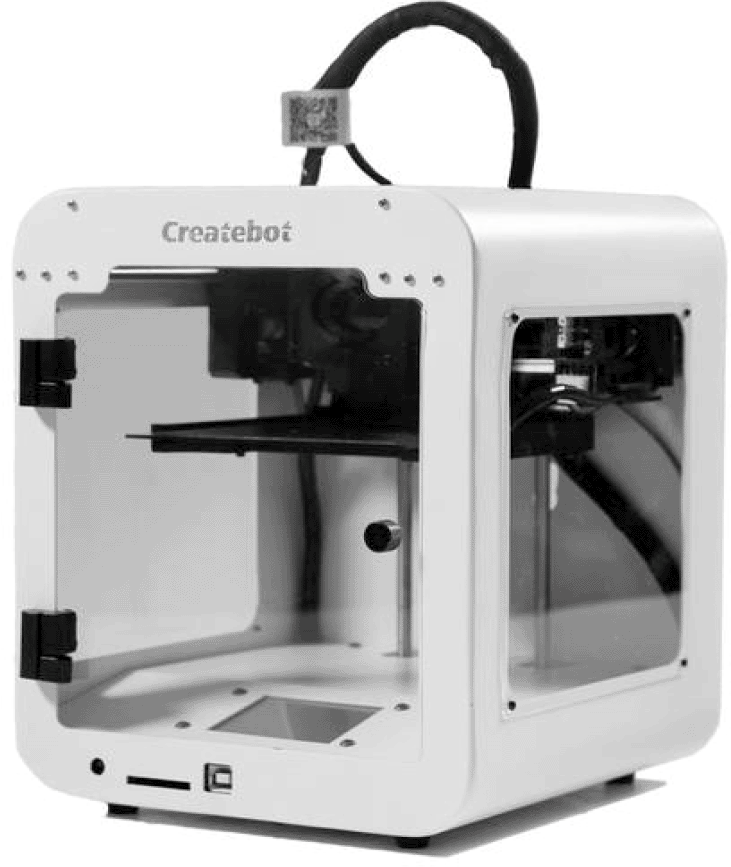
|
| Dagoma | It’s an affordable, innovative, and easy-to-use printer. They’re recognized for their focus on local manufacturing, sustainable development, and the maker community. Their products range from beginner models to professional equipment. Available at https://www.dagoma3d.com/imprimez-en-3d | 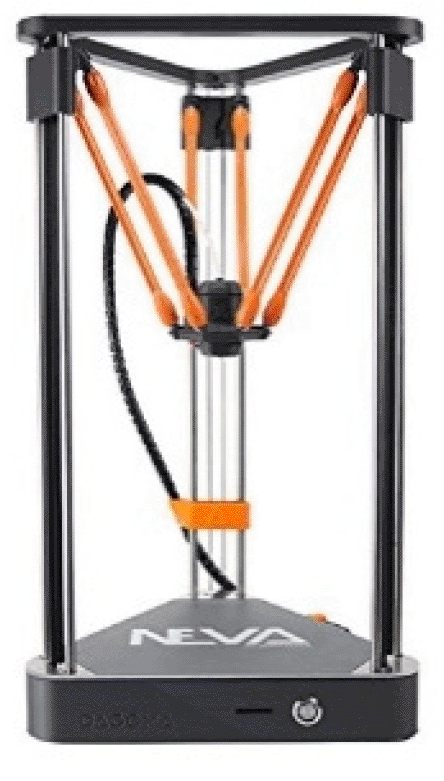
|
| Delta 2040 | Advanced printing and features for professional environments, such as remote connectivity and temperature control. Its robust structure and extrusion options allow it to adapt to different products. Available at https://top3dshop.com/blog/delta-wasp-2040-clay-3d-printer-review | 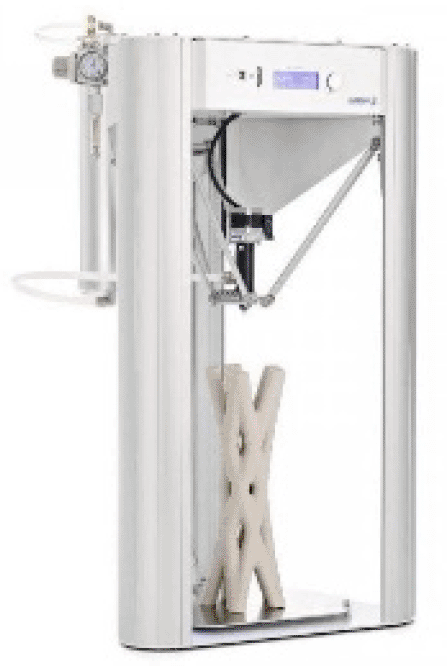
|
| Shinnove | It’s a dual-extruder industrial food 3D printer that allows you to print a variety of edible products accurately and relatively quickly. Its design makes it ideal for commercial and educational uses where automated culinary creativity is required. Available at http://www.shiyintech.com/product/ | 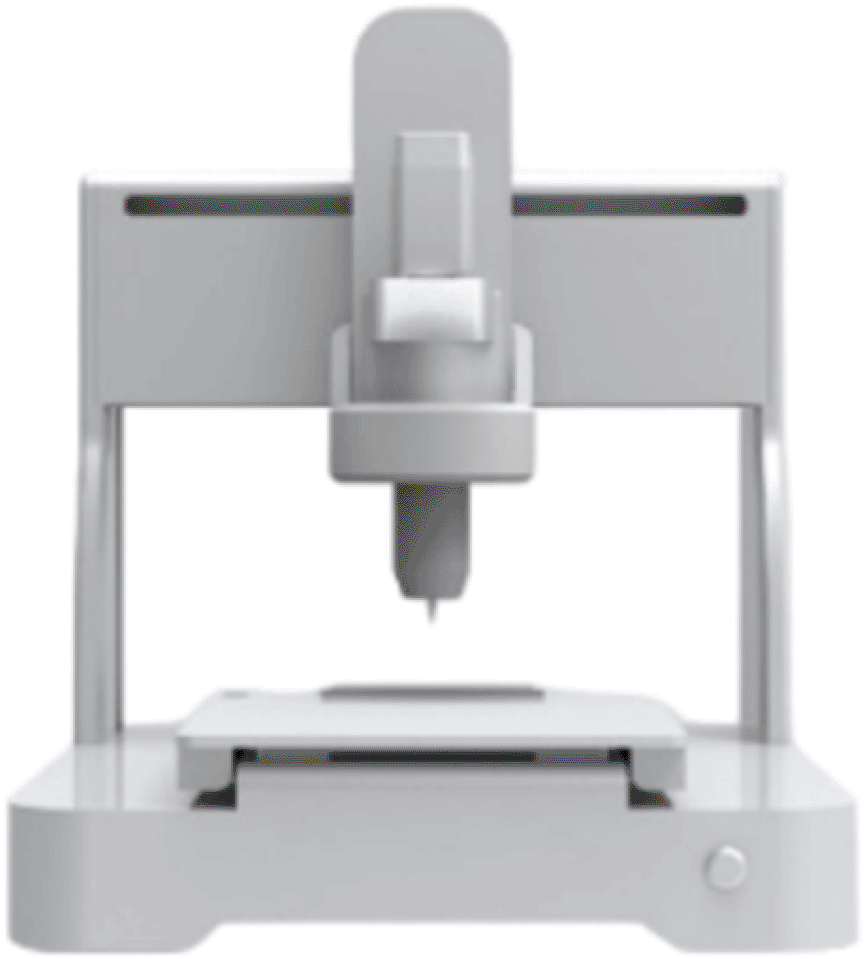
|
| Felix ijsselstein | It’s a reliable, precise 3D printer designed to high Dutch engineering standards. Available at https://felixprinters.com/ | 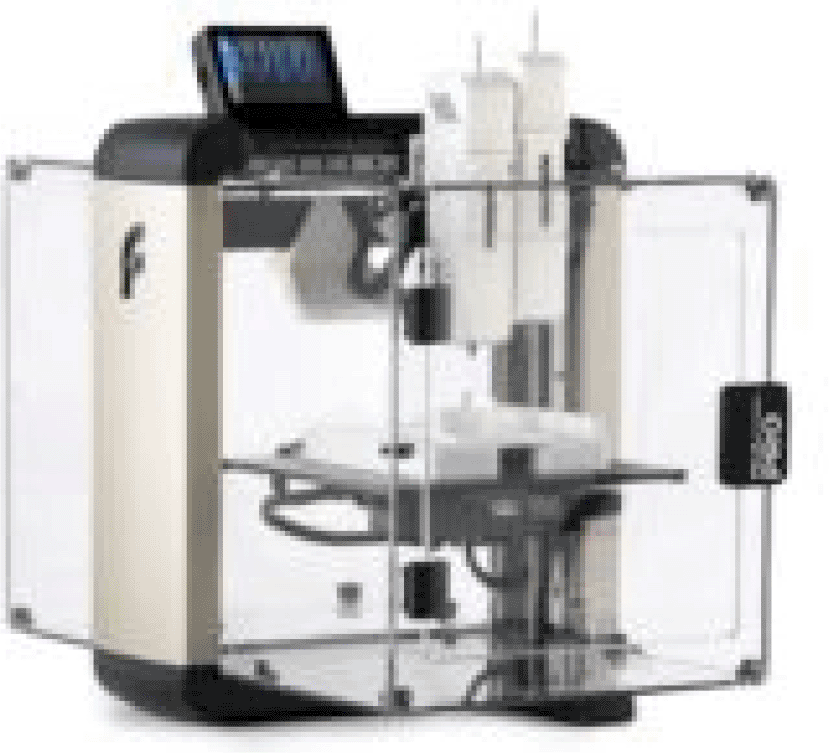
|
| Food bot | The FoodBot S2 is a compact, elegant, and functional food 3D printer, ideal for printing personalized foods such as chocolates, jams, or doughs. It stands out for its ease of use (touchscreen, automatic leveling), hygienic extrusion, and support for multiple ingredients. Available at https://the3dprinterstore.com/ | 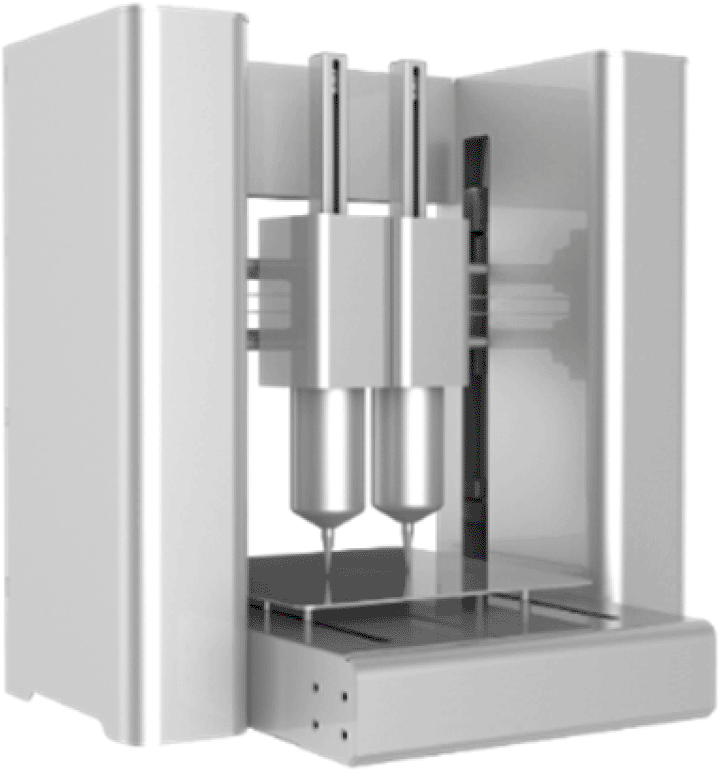
|
| Foodini | The Foodini is an advanced 3D food printer that allows you to create personalized and visually sophisticated foods from fresh ingredients. Available at https://www.impresoras3d.com/foodini-una-impresora-3d-para-cocinar-en-casa/ | 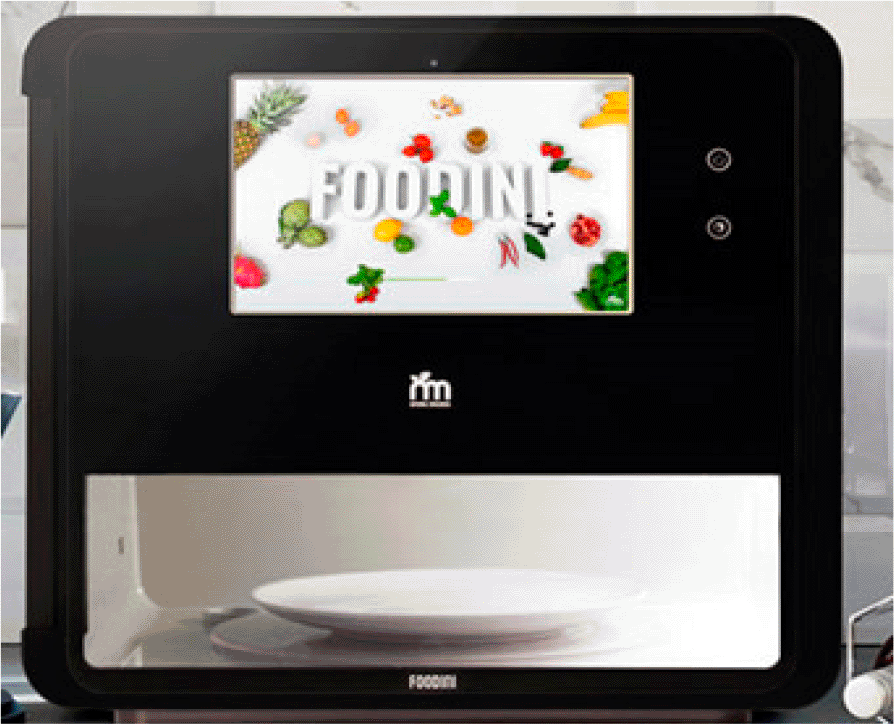
|
| Shiyin Tech | This syringe-extrusion printer represents a powerful combination for digital culinary creation: it offers precision, material versatility, and operational speed. It also stands out for its relatively accessible interface and performance that allows for the production of customized foods in minutes. Available at https://www.3dfoodbot.com/ | 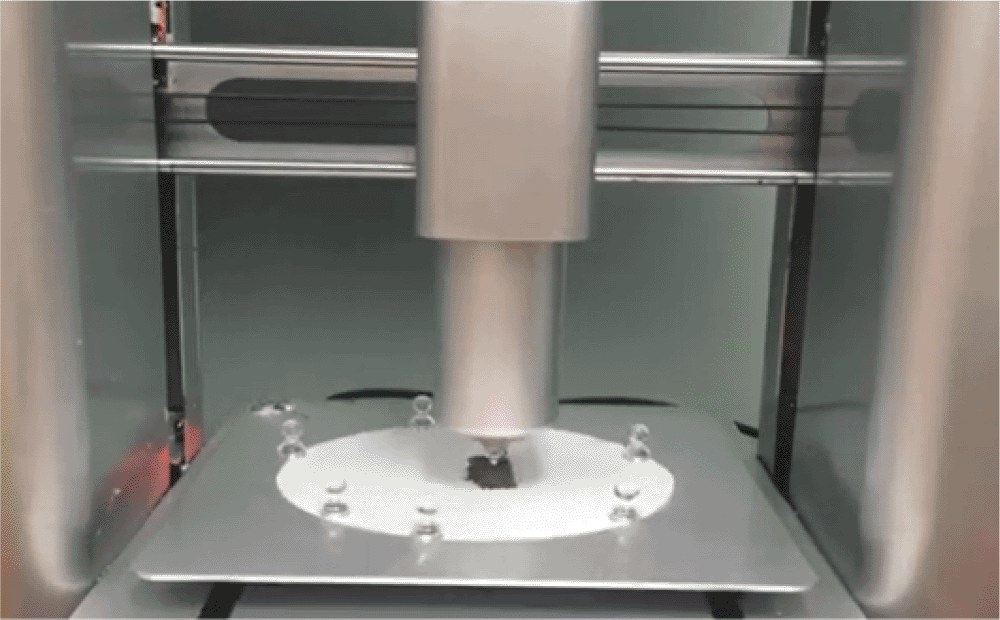
|
| Maker Box 2.0 | It’s an FDM (Filament Deposition Modeling) 3D printer based on the popular RepRap platform, adapted to be an accessible and practical solution for both educational and home environments. Available at https://3dsnp.gobizkorea.com/mini/site/productList.do | 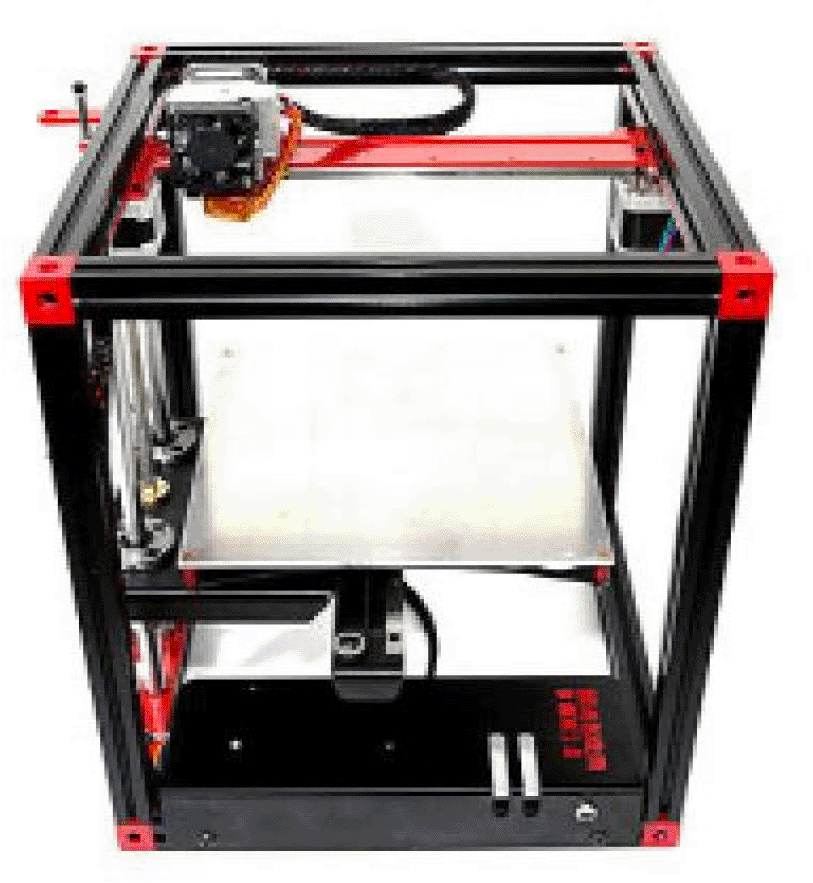
|
| Mycusini®, Procusini, Freising | It’s a compact, intuitive, and decorative chocolate 3D printer, perfect for home bakers, educational settings, or those looking to experiment with creative culinary presentations. Available at https://www.3dnatives.com/print2taste-food-printing-200520212/ | 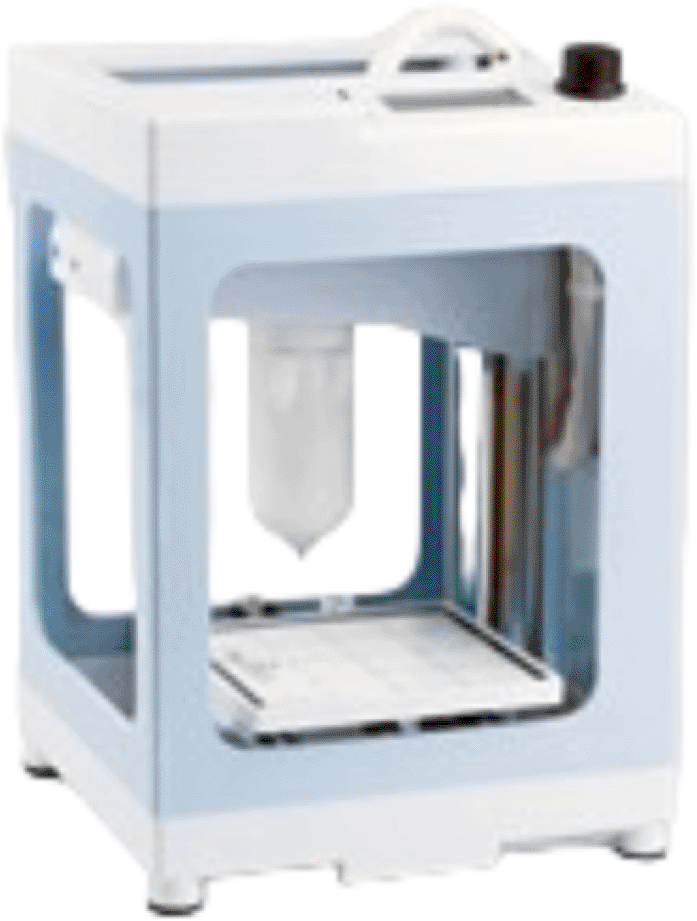
|
| TNO in-house manufactured single head 3D printer | TNO’s in-house single-head 3D printer is a versatile and highly specialized platform designed to explore and realize personalized food products tailored to specific nutritional needs. Available at https://www.tno.nl/en/healthy/flexibele-en-vrije-vorm-producten/future-3d-printed-food/ | 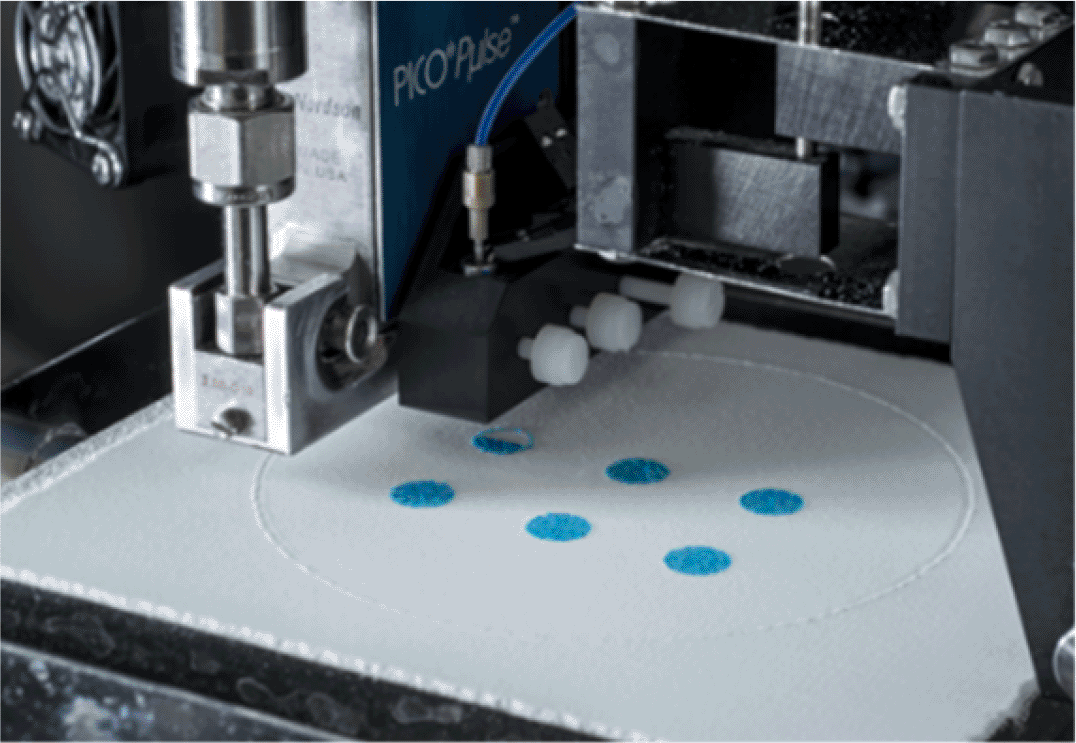
|
| Wiiboox Sweetin | It’s a printer specialized in chocolate and other edible ingredients. Available at https://www.wiiboox.com/3d-printer-wiiboox-sweetin.php | 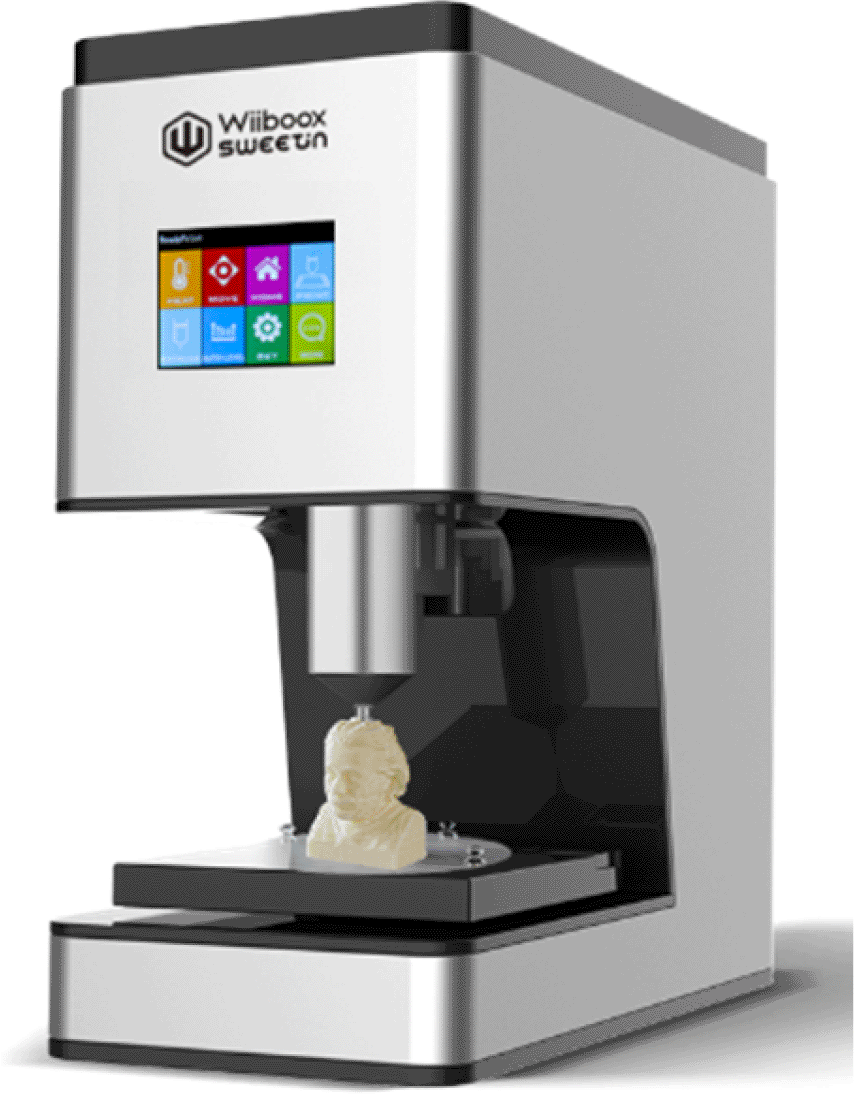
|
| X400 V3 | Featuring mechanical and thermal improvements, along with features like dual extrusion and automation capabilities, it’s a solid choice for demanding industrial or development environments. Available at https://www.3dnatives.com/3d-materials/3d-printers/x400/ | 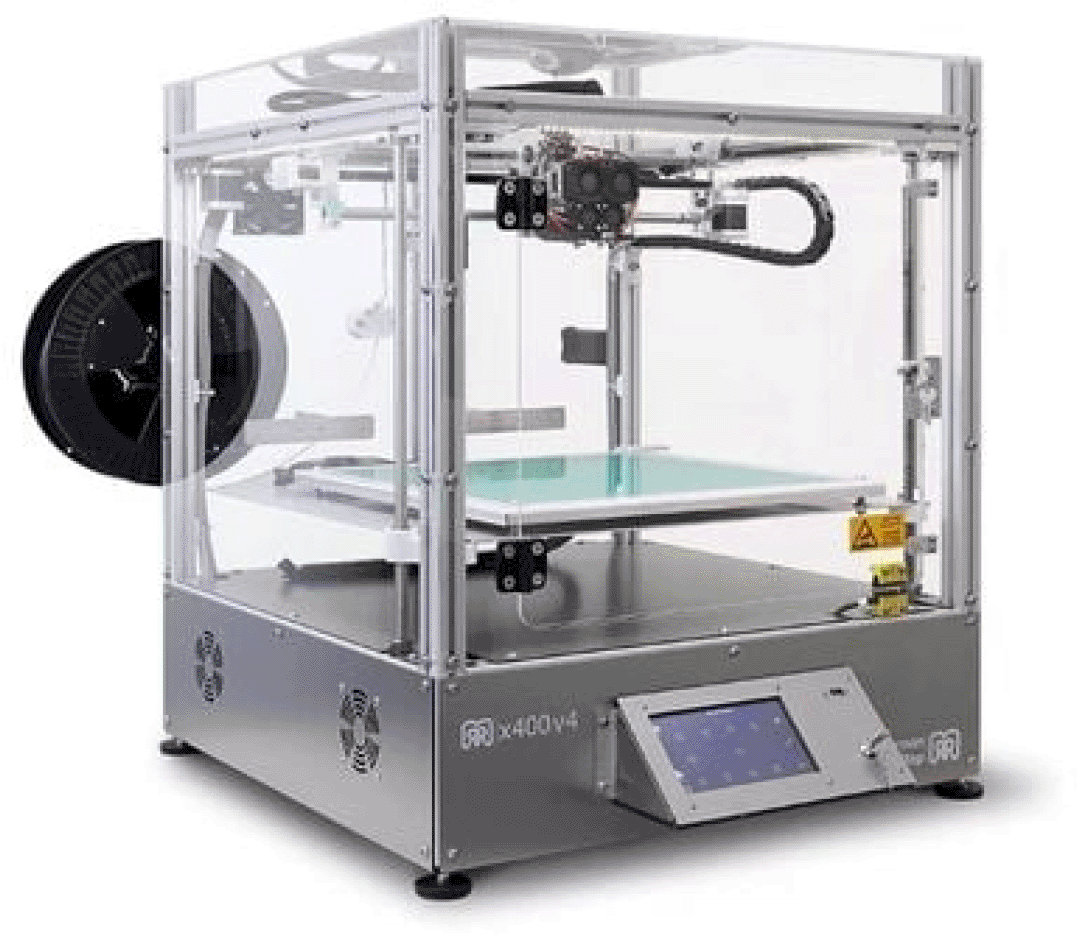
|
| Zmorph VX, Wrocław | It’s a versatile and powerful multifunctional 3D printer with a robust design and interchangeable tools that allow for tasks beyond simple modeling. Available at https://3dprintingcenter.net/zmorph-vx-full-set-work-with-the-3d-printer/ | 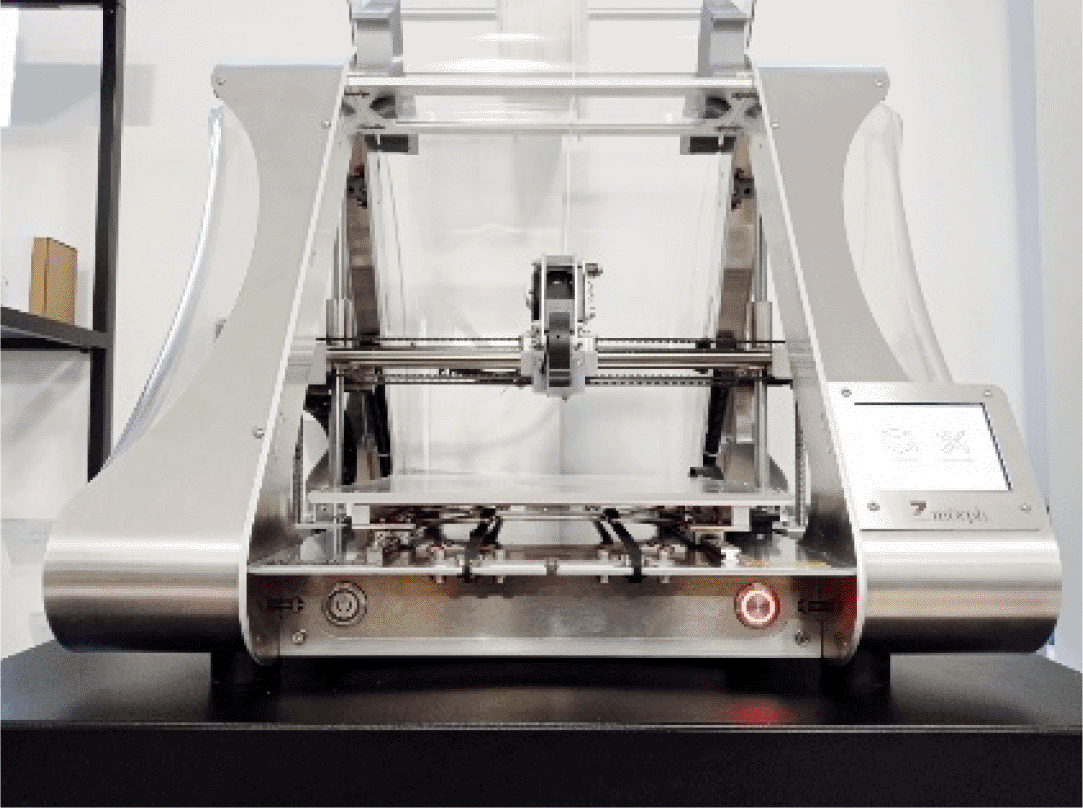
|
The distribution of food categories ( Figure 5) identifies the main areas of interest in 3D printing research. Meat products and chocolate emerge as the most studied categories, each representing a critical facet of the field: the former focuses on the nutritional and textural customization of complex protein systems, while the latter serves as an ideal model material due to its predictable thermoplastic behavior and high sensory acceptability. Other notable categories include gel and puree systems (e.g., mashed potatoes, lemon mousse), whose rheology is highly manipulability, and pastry products. It is relevant to note that geometric shapes are presented as a separate category, demonstrating that a considerable portion of research uses simple, standardized designs for methodological purposes. This approach allows for systematic relationships between printing parameters, material properties, and sensory outcomes.
The characterization of 3D-printed foods requires a multidimensional analytical approach, as evidenced by the diversity of techniques reported in Table 2. Rheological and texture evaluations emerge as fundamental pillars, applied in 100% of the studies to optimize printability and predict the mechanical behavior of products.8,12 TPA, in particular, allows quantifying how printing parameters such as infill level or extrusion speed modulate attributes such as hardness and elasticity.13
Microstructural techniques (SEM, CLSM) are equally critical, revealing how layer-by-layer deposition generates unique microstructures that determine macroscopic properties such as flavor release and textural perception.14 Complementarity with spectroscopic techniques (FTIR, LF-NMR) allows evaluating molecular changes during processing, especially for the design of protein- or polysaccharide-based inks.15
The application of proximate and compositional chemical analyses strengthens the potential of 3D printing for nutritional personalization, while colorimetry and microbiology techniques ensure food quality and safety standards. The emergence of physiological methodologies (EMG, tribology) marks a trend towards the comprehensive assessment of the oral and digestive functionality of printed foods, bridging the gap between product design and consumer experience.16 This convergence of analytical disciplines—from materials science to digestive physiology—constitutes the hallmark of advanced research in 3D printed foods.
Methods applied with trained panels
The sensory methodologies employed ( Table 3) reveal a clear emphasis on descriptive over discriminative methods. The predominant technique is Quantitative Descriptive Analysis (QDA), reported in 18 of the reviewed studies.17–34 This underscores that the primary focus of current research is the comprehensive characterization and detailed mapping of the sensory profile of 3D-printed foods. This approach is essential for understanding how printing and formulation variables translate into specific sensory attributes, which constitutes the cornerstone for product optimization in this emerging technology.7,9 The application of these methodologies by trained or semi-trained panels, along with the use of robust statistical analyses (ANOVA, PCA), confirms adherence to the standards of rigor inherent to sensory science.35 However, the remarkable diversity of reported scales (unstructured linear scales of 7, 9, 10, and 15 cm, and 3- to 4-category rating scales), although effective at the individual study level, poses a significant challenge for the direct comparison of results across studies and for meta-analysis of data. The limited application of both traditional and emerging sensory methodologies represents a critical shortcoming of the studies reviewed. Future research should incorporate alternative techniques supported by harmonized protocols to strengthen the evaluation and development of food products.36
| Sensory analysis | Method | Scale | Food | Types of participants | Number of participants | Statistical analysis | References |
|---|---|---|---|---|---|---|---|
| Descriptives | |||||||
| QDA | Unstructured linear scale of 7, 9, 10, and 15 cm Sensory scoring with 3 to 4 categories of 7, 9, 10, and 20 points | Snacks Geometric shapes Animal figures Meat Lemon mousse | Trained evaluators Panelists Sensory panelists Semi-trained judges | 7-30 | Analysis of variance (ANOVA), radar or spider chart and principal components analysis (PCA) | 17–34 | |
| Discriminatory | |||||||
| 2-AFC tests | Forced election | Geometric shapes | Trained panelists | 16 | One-sided and two-sided paired comparison tests | 37 |
The paucity of discriminative methods, with only one study37 using a 2-CFA test, is particularly revealing. It suggests that the field has largely moved beyond the initial phase of simply detecting differences and is now focusing on a deeper understanding of the organoleptic properties of these novel products. This transition from simple research questions (“is there a difference?”) to more complex ones (“what is the exact nature of the difference and how can it be controlled?”) is an indicator of the progressive maturation of food 3D printing research.38 The dominance of QDA is therefore an appropriate methodological response to the need to generate multidimensional, high-resolution data that allow correlating material and process properties with the final sensory experience of the consumer.
Methods applied with consumers
When used with consumers, the sensory methodologies employed ( Table 4) reveals a predominance of affective methods, reported in 52 studies,19,20,22,23,25–27,32,33,39–81 which underlines the focus on consumer acceptance. as a key criterion for the development of 3D printed products. These methods, which include hedonic scales and preference tests, have been rigorously applied through both parametric and non-parametric statistical analyses.35 Descriptive methods are also represented, with 5 studies using CATA19,44,46,59,61 and 4 studies applying TDS.61,75,82,83 The use of CATA reflects a trend towards rapid and efficient methods for sensory characterization with consumers,84 while the application of TDS demonstrates a growing interest in capturing the temporal dimension of sensory perception in 3D printed products.85 The limited application of physiological methods (only 1 study62) suggests an area of opportunity for future research. Electromyography (EMG) and other physiological techniques could provide additional insights into the interaction between the structural properties of printed foods and their oral processing.86 The diversity of reported scales and methods, although effective at the individual level, poses challenges for comparison across studies. Therefore, methodological standardization will emerge as a critical need as the field matures.87
| Sensory analysis | Method | Scale | Food | Types of participants | Number of participants | Statistical analysis | References |
|---|---|---|---|---|---|---|---|
| Descriptives | |||||||
| Static | Check All That Apply (CATA) | 10-30 sensory attributes | Geometric shapes Cookies Snack Chocolate | 20-133 | Panelists experienced Untrained panelists Consumer | Contingency Table Cochran’s Q Test Correspondence Analysis | 19,44,46,59,61 |
| Dynamic | Temporal Dominance of Sensations (TDS) | List two, eight and nine attributes (unstructured scale) | Cheese, meat, chocolate | 10-70 | Trained panel Consumer | TDS curves, plot and generalized additive model with penalized regression | 61,75,82,83 |
| Affective | |||||||
| Hedonic scale (color, appearance, aroma, texture, flavor, overall liking, etc.) Degree of sensation Preference ranking test Paired preference test Purchase intention Consumer Acceptability Sensory scoring | 5-, 7-, and 9-point structure scale 10- and 20-point structure scale Ordering scale Forced-choice 5- and 7-point structure scale 15 cm and 100 mm line scales 3- to 4-category sensory scoring, 9 and 20 points | Geometric figures Cookies Snack Chocolate Gummy Candy Meat Marzipan Biscuits | 7-30 20-30 5-133 | Trained evaluation or trained participants Semitrained panelists Untrained panelists, graduate students or Consumers | Parametric: Mixed-linear models Analysis of variance (ANOVA) Principal components analysis (PCA) Radar graphic Tukey test Nonparametric: Friedman tests Kruskal-Wallis test Dunn test Binomial test | 19,20,22,23,25–27,32,33,39–81 | |
| Physiological | |||||||
| Electromyographic (EMG) | During mastication time | Biscuits | 25 | Consumer | ANOVA | 63 |
The literature on the sensory evaluation of 3D-printed foods highlights a rapidly advancing field with both notable achievements and persistent challenges. Five key research pathways can be identified: First, the limited use of both traditional and emerging sensory methodologies—across diverse scales, trained panel techniques, and consumer tests—highlights the need for standardized evaluation protocols and good sensory practices to establish robust links between instrumental and sensory properties.7,9,87 Second, bridging the gap between material science and sensory perception requires integrative studies linking printing parameters, rheological and microstructural features, and sensory responses, supported by advanced tools such as oral tribology, EMG, and digestion models, to move from “printability” to “eatability”.12,36 Third, research should expand toward personalized nutrition and sustainability, using 3D printing to tailor foods for specific populations and to valorize alternative resources (by-products, insects, algae, plant proteins), while addressing sensory acceptance through parameter optimization.2,15 Fourth, technological innovations and AI integration offer opportunities to design multi-material structures with novel sensory experiences and to apply machine learning for predictive sensory-driven printing, moving beyond trial-and-error approaches.6,14 Finally, progress depends on consumer-centric approaches and market translation, including large-scale overall liking studies, strategies to reduce neophobia, and techno-economic analyses to scale up production from prototypes to viable commercial products.35,38
This systematic review successfully mapped and critically synthesized the current knowledge on the sensory evaluation of 3D-printed foods, analyzing 65 studies. The field has expanded rapidly since 2019, particularly in China, India, and the European Union, with strong multidisciplinary contributions across food science, material engineering, and sensory research. Most studies have focused on chocolate and meat products, often employing geometric models to standardize experiments. Sensory evaluation has relied mainly on hedonic scales and descriptive analysis, aiming to capture both consumer acceptance and the influence of printing parameters and formulations. The results reveal a methodological gap: the limited use of sensory techniques applied to trained panels and consumers by researchers. Furthermore, that sensory quality is tightly linked to material properties: rheological (e.g., viscosity, yield stress) and textural attributes (e.g., hardness, cohesiveness) determine not only printability but also the final sensory experience. Finally, advancing toward commercialization requires an integrated, interdisciplinary approach that combines material science, rheology, advanced analytics, and sensory science to engineer 3D-printed foods that are not only printable but also nutritious, sustainable, and sensorially acceptable to diverse consumer groups.
No data are associated with this article.
Supplementary Data Availability Statement in Zenodo repository: “Sensory Evaluation of 3D-Printed Foods: A Systematic Literature Review”. https://doi.org/10.5281/zenodo.17295507.
This project contains following extended data:
Data are available under the terms of the Creative Commons Zero “No rights reserved” data waiver (CC0 Public domain dedication).
| Views | Downloads | |
|---|---|---|
| F1000Research | - | - |
|
PubMed Central
Data from PMC are received and updated monthly.
|
- | - |
Provide sufficient details of any financial or non-financial competing interests to enable users to assess whether your comments might lead a reasonable person to question your impartiality. Consider the following examples, but note that this is not an exhaustive list:
Sign up for content alerts and receive a weekly or monthly email with all newly published articles
Already registered? Sign in
The email address should be the one you originally registered with F1000.
You registered with F1000 via Google, so we cannot reset your password.
To sign in, please click here.
If you still need help with your Google account password, please click here.
You registered with F1000 via Facebook, so we cannot reset your password.
To sign in, please click here.
If you still need help with your Facebook account password, please click here.
If your email address is registered with us, we will email you instructions to reset your password.
If you think you should have received this email but it has not arrived, please check your spam filters and/or contact for further assistance.
Comments on this article Comments (0)